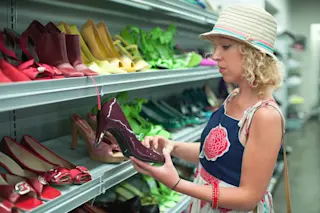Making secondhand purchases is naturally eco-friendly: You're giving new life to something ordinarily destined for the landfill — and likely saving some money and supporting a good cause to boot.
And while thrift stores remain a solid part of the solution to our trash problems, they are struggling in an era of fast fashion — where a cheap price tag often carries more weight with consumers than quality materials.
“There is way too much clothing being produced, the length of time that consumers are wearing clothes has fallen dramatically, and as a result there’s a flood of unwanted clothes moving through the secondhand clothing system,” says Elizabeth Cline, journalist and author of Overdressed: The Shockingly High Cost of Cheap Fashion and The Conscious Closet: A Revolutionary Guide to Looking Good While Doing Good. “The thrift store system we have today was set up at a time in history when clothes ...














